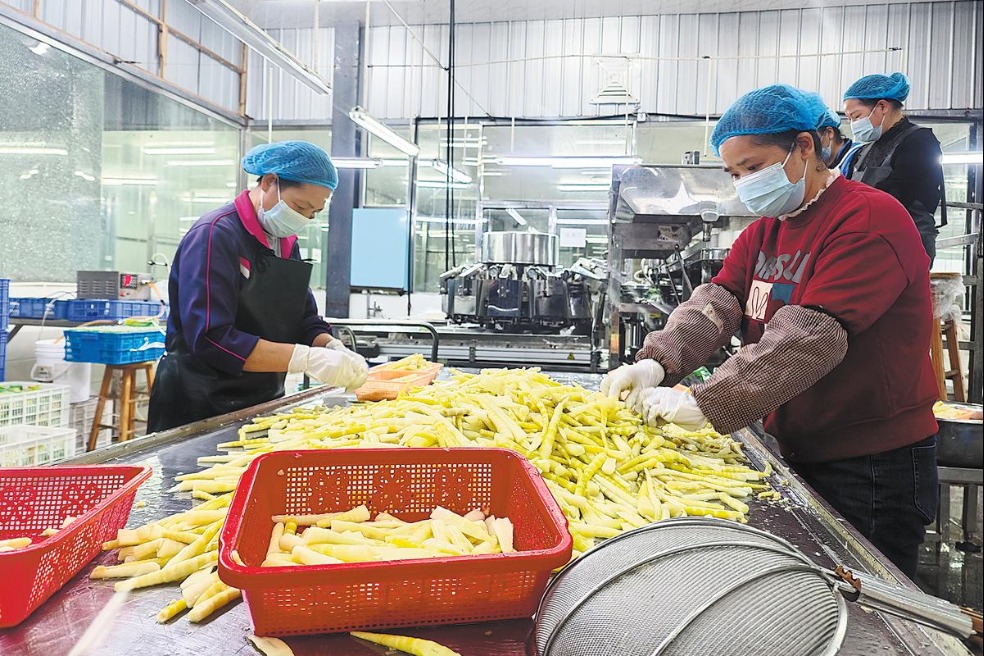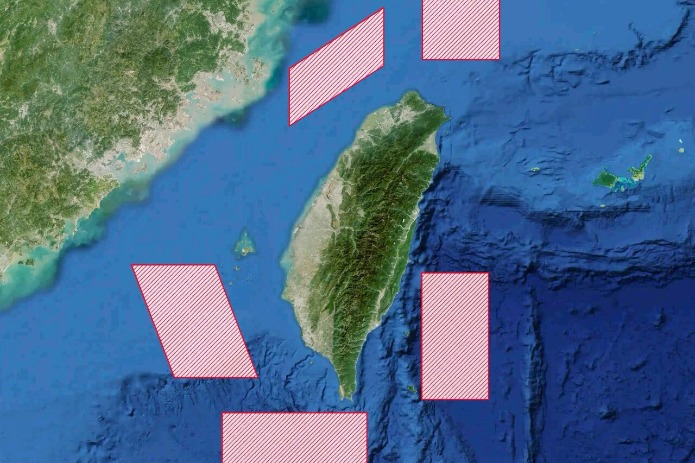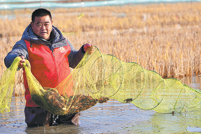What they found in the realm that just vanished
An exhibition brings to light some of the mysteries of the State of E, Zhang Kun reports in Shanghai.

The State of E existed more than 3,000 years ago in China, and few records survive.
An exhibition at the Shanghai Museum, featuring 60 pieces and sets of bronze of the State of E casts light on some of its mysteries.
A Legend of the Han and Huai Valleys: Selected Bronzes of the State of E, on until Jan 16, presents objects from five Chinese institutions. It is the first comprehensive study of the history of E, a state of the Zhou Dynasty (c. 11th century-256 BC).
The Shanghai Museum itself has no more than three bronze objects of E (the pronunciation of the name is similar to that of the ir in "birth") and has borrowed 57 pieces of selected bronze ware from the National Museum of China in Beijing, Suizhou Museum in Hubei province, Nanyang Cultural Relics and Archaeology Research Institute, Henan province, and private collectors.
"Thanks to their trust and help, we are able to present the first assembly ever of E bronze ware from the early Western Zhou Dynasty (c. 11th century-771 BC) to the early Spring and Autumn Period (770-476 BC)," said Yang Zhigang, director of the Shanghai Museum.
"Through the exhibits and their inscriptions, the exhibition delineates the complete evolution of E's bronze art and depicts the state's true presence in history," he said before the show opened on Oct 18.
"We hope viewers will enjoy an unforgettable experience of history and art, and learn more about the long history and glorious civilization of China."
The 60 bronze objects of E State are treasures of great artistic and historical value, and doing research on them would reveal some missing pieces in understanding bronze processing technology in ancient China too, said Ma Jinhong, head of the bronze department of Shanghai Museum.
"The objects feature some unique elements not found anywhere else, and even the green rust on the surface has a different tint."
Shanghai Museum had rubbings made from the inscriptions and has mounted rubbings alongside the objects to highlight the vivid details.
Nineteen objects on display have been borrowed from Suizhou Museum. Sun Jianhui, its vice director, said, archaeologists began to make sporadic discoveries in Suizhou as early as the 1970s and in 2007 an important batch of 27 bronze pieces was unearthed from an ancient tomb of Mount Yangzi. They were fine artifacts with exotic patterns and exquisite designs, and more importantly the inscriptions of Marquis of E, as well as large number of funerary objects, revealed the identity of the tomb owner.
The discovery brought historians' attention to the long-lost state of E. As an important ruler of a vassal state of the Zhou Dynasty, the marquis of E guarded the southern border of the kingdom and had close ties with the imperial court.
The bronze objects showed a distinctive style. Chinese bronze from the Zhou Dynasty often featured patterns of animal masks and on some objects unearthed in Suizhou the bronze vessels showed facial features that combined those of humans and animals. Speaking of a bronze wine vessel named You decorated with animal masks on the sides, Sun, standing next to the exhibit, said: "The eyes are obviously human. Even the eyebrows are vividly depicted."
The unique features of animal masks on the bronzes of E State made their objects look especially friendly, in contrast to fierce beasts often found on other bronze animal masks, he said.
"We have selected our finest pieces to be shown in Shanghai Museum."
Shanghai Museum has demonstrated its prowess in research and in putting on exhibitions, he said.
"They had some objects CT scanned and made important new findings about the bronze processing techniques in ancient China." Two tripod cauldrons, one from a private collector and the other from the National Museum of China, have a prominent role in the exhibition. They present a dramatic turning point in the story of E State, said Wei Xinying, a researcher with Shanghai Museum.
Inscriptions on the first cauldron recorded a pleasant banquet the Marquis of E held for the Zhou king. It was such a joyful event, with wine, arrow-shooting games and valuable gifts bestowed by the king, so that the cauldron was made to commemorate the occasion.
However, inscriptions on the second cauldron show that the Marquis of E, who drank and dined with the king, rebelled and led a union army of southern tribes heading northward to fight against his erstwhile dining partner. The rebellion was defeated and the cauldron was made in tribute to the marshal who led the battle against the invaders.
"We don't know why the marquis of E rebelled, except that he didn't belong to the same clan as the king, so the latter may not have fully trusted him," Wei said.
The State of E all but vanished from Chinese history, and historians assumed it had been wiped out without any remaining trace.
In 2012 a cemetery was found at the work site of a water diversion project in Nanyang, Henan province. A remarkable batch of bronzes were unearthed, many bearing inscriptions that showed the tomb belonged to the Marquis of E. In the cemetery were the remains of nobles dating from the Late Western Zhou Dynasty to the early Spring and Autumn Period, including those of four marquises of E and their spouses.
Thirty-six of the objects from Nanyang are on display in Shanghai.
"Perhaps surviving members of the clan moved to Nanyang," Wei said, or perhaps the Zhou king assigned a different marquis of E and placed him in Nanyang. There are still a lot of unsolved mysteries about the ancient State of E."
IF YOU GO
A Legend of the Han and Huai Valleys: Selected Bronzes of the State of E
9 am-5 pm
(last entry by 4:30 pm), Tue-Sun.
Museum viewing reservations are required to be made on WeChat.
4F showroom, Shanghai Museum, 201 Renmin Avenue, Huangpu district, Shanghai.
021-6372-3500




Today's Top News
- China to apply lower import tariff rates to unleash market potential
- China proves to be active and reliable mediator
- Three-party talks help to restore peace
- Huangyan coral reefs healthy, says report
- PLA conducts major drill near Taiwan
- Washington should realize its interference in Taiwan question is a recipe it won't want to eat: China Daily editorial






























